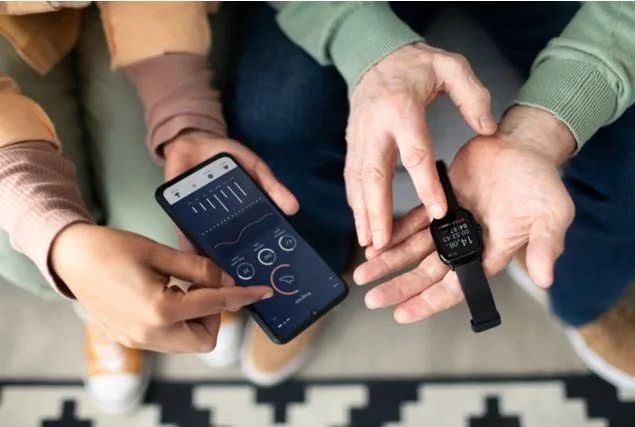Wearable Tech Innovations Changing Pro Sports | Top 5 in 2025
Sports in 2025 are played not just on fields, courts, or tracks, but also through circuits, sensors, and smart fabrics. The modern athlete is wired, tracked, and optimized in real time. From head to toe, wearable tech is quietly rewriting the playbook behind the scenes. And it’s not just about performance anymore—injury prevention, recovery, and even contract negotiations are now influenced by data. These changes are sweeping through pro sports, fueled by innovation and a relentless pursuit of competitive edges. One area where this evolution quietly intersects with entertainment is Mostbet Nepal, connecting fans to sports through real-time insights and engagement.
Smart Fabrics Are the New Uniforms
Athletic wear in 2025 goes far beyond moisture-wicking or compression. We’re talking about smart textiles—clothing loaded with micro-sensors that track every move, heartbeat, and muscle contraction. These fabrics don’t just react to the body; they talk back to the teams.
Pro franchises now equip players with biometric kits that look like regular training gear but stream real-time data to the bench. Muscle fatigue? A flag goes up. Overheating? A notification pings the medical team. With this level of oversight, many coaches can adjust loads mid-game or mid-week.
For athletes, this means fewer injuries caused by overtraining. For coaches, it’s a chance to tweak strategy based on how fresh players actually are. For scouts and managers, these wearables deliver hard numbers to back up subjective decisions.
The big names in this game? Hexoskin, Athos, and Komodo are leading the charge. But niche startups are also pushing limits—some even developing smart socks that can detect imbalances in gait, pointing out injury risks before they strike.
Brain Tech in Helmets and Headbands
Head injuries have always been a major concern in contact sports. In 2025, helmet tech has evolved from basic padding into full-blown neuro-monitoring systems.
New sensors placed inside headgear now track the force and location of impacts in real time. Some even analyze neural response post-hit to flag possible concussions instantly. Teams in the NFL, NHL, and rugby leagues now rely on this tech to make quicker, safer calls on whether a player should stay on the field.
Then there’s neuro-feedback training. Some players use headbands during workouts to monitor brain activity, training themselves to stay calmer under pressure or react faster to dynamic play.
This tech isn’t science fiction—companies like NeuroSky and BrainCo are already deep in partnerships with major sports leagues. And we’re seeing results: faster reaction times, better decision-making, and sharper focus under stress.
GPS and Motion Sensors Built into the Gear
It started with GPS vests during practice sessions. Now, motion sensors are embedded into everything—cleats, shin guards, even gloves. These microchips track acceleration, change of direction, jump height, and much more.
For coaches, it’s gold. They can analyze how hard a player is working, how much ground they cover, and whether they’re slowing down over time. This isn’t just for training. Some leagues allow certain metrics to be tracked live during games, offering new tactical insights on the fly.
Teams build entire load management systems around this data. In high-intensity leagues like the NBA or English Premier League, this is critical to keep players fresh over a long season.
Three key uses for this data in 2025:
- Load monitoring: Ensures recovery periods match effort levels
- Tactical feedback: Helps analyze spacing, movement, and efficiency
- Return-to-play protocols: Confirms when injured players are truly ready
With this info, players stay healthier, coaches make smarter decisions, and performance peaks when it matters most.
Wearables for Recovery and Sleep
Performance doesn’t end with the final whistle. Recovery is where champions are built, and wearable tech now tracks every hour off the field too. Athletes wear sleep bands, skin-temperature monitors, and even hydration patches.
Products like WHOOP and Oura ring have become daily essentials for athletes across multiple leagues. They track sleep cycles, HRV (heart rate variability), and even respiratory rate to gauge readiness. Instead of guessing how rested a player feels, teams know exactly how well they’re recovering.
In 2025, recovery data is part of contract negotiations, trade discussions, and long-term planning. If an athlete has elite recovery metrics, that can increase their value.
A few areas where recovery wearables are game-changers:
- Sleep optimization: Identifies ideal bedtime and wake times for each athlete
- Injury prevention: Spots red flags in strain or poor recovery trends
- Mental wellness: Measures stress responses and mood swings
Tracking off-field metrics turns rest into a science, not a guess. And it’s leveling the playing field for veteran players to extend their prime years.
Augmented Vision and Real-Time Feedback
Imagine seeing your shooting accuracy or passing speed as it happens. That’s what AR-based wearable tech is doing in 2025. Players in sports like tennis, basketball, and soccer now use smart glasses or contact lenses that offer a heads-up display during practice.
These wearables layer digital data over the real world. So during training, an athlete sees visual cues—where to pass, where defenders are likely to go, or even a virtual “ideal shot path.”
It’s not just AR, either. Smart earbuds give real-time audio cues. Coaches can feed live corrections directly into the player’s ear without shouting across the court.
Key training enhancements from this tech include:
- Instant feedback: Speeds up skill development by correcting in real time
- Spatial awareness training: Sharpens decision-making under pressure
- Custom drills: Personalized sessions that adapt based on performance
This kind of immersive training bridges the gap between knowledge and execution. It creates smarter, more responsive athletes who improve faster than ever.
Wearable tech is no longer just a novelty. In 2025, it’s essential. These five innovations are reshaping every layer of professional sports—from how athletes train and compete to how they rest and recover. The tech is smarter, more invisible, and more impactful than ever. And the game? It’s faster, safer, and more data-driven. This isn’t the future. It’s happening now.



